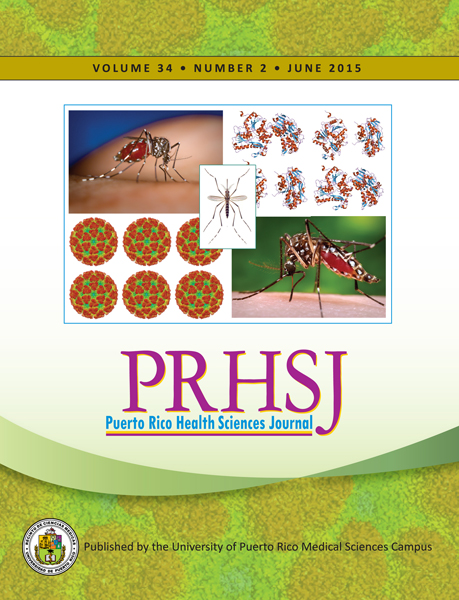Abstract
Vitamin D has been attracting increased attention because of higher prevalences of vitamin D insufficiency and deficiency than expected in areas with sufficient sun exposure. Even though sunlight exposure and diet are the main determinants of vitamin D status, other factors, such as age, race, the use (or not) of sunscreen, medications, and malabsorptive conditions, also affect vitamin D levels. Recent studies have found high prevalences of vitamin D deficiency and insufficiency in different populations. However, there are limited data regarding the prevalence of vitamin D deficiency and insufficiency in Puerto Rico. To shed more light on the subject, we evaluated a sample of 51 internal medicine residents and research fellows, aged from 25 to 39 years at the University District Hospital in San Juan, Puerto Rico, doing so by means of a questionnaire that explored basic socio demographic and lifestyle characteristics and collected anthropometric data; in addition, we obtained blood samples in order to determine 25-hydroxyvitamin D levels. The median 25-hydroxyvitamin D level was 21 ng/mL (range, 7-38 ng/mL). Forty-five participants (88.2%) had 25-hydroxyvitamin D concentrations of lower than 30 ng/mL. We found vitamin D deficiencies in 43.1% of the population and insufficiencies in 45.1%. Contributory factors to our findings include limited exposure to sunlight during periods of high sun intensity, increased body mass index, and a limited area of the body being exposed to sunlight. A relationship between reduced physical activity levels and hypovitaminosis D was also found. Both calcium intake and vitamin D intake, which were markedly below recommended daily allowances, were positively correlated with 25-hydroxy vitamin D levels, but with a weak association.
Authors who publish with this journal agree to the following terms:
a. Authors retain copyright and grant the journal right of first publication with the work simultaneously licensed under a Creative Commons Attribution License that allows others to share the work with an acknowledgement of the work's authorship and initial publication in this journal.
b. Authors are able to enter into separate, additional contractual arrangements for the non-exclusive distribution of the journal's published version of the work (e.g., post it to an institutional repository or publish it in a book), with an acknowledgement of its initial publication in this journal.
c. Authors are permitted and encouraged to post their work online (e.g., in institutional repositories or on their website) prior to and during the submission process, as it can lead to productive exchanges, as well as earlier and greater citation of published work (See The Effect of Open Access).
